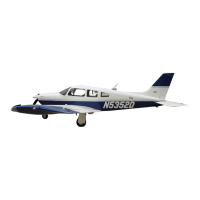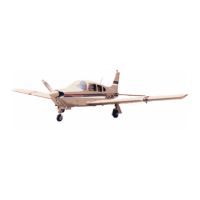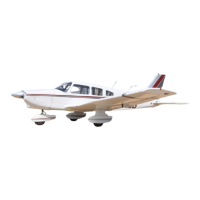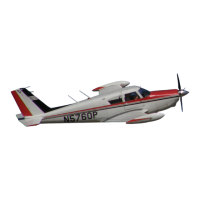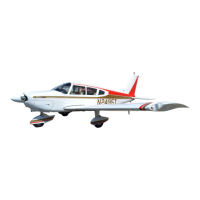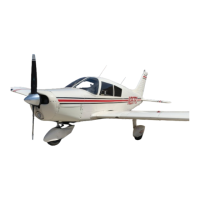12. Install the shimmy dampener and safety.
13. Lubricate the gear assembly (refer to Lubrication Chart, Chapter 12).
14. Compress and extend the strut several times to ascertain that the strut will operate freely. Weight of the
gear wheel and fork should allow the strut to extend.
15. Service the oleo strut with fluid and air (refer to Oleo Struts, Chapter 12).
16. Check nose gear for alignment (refer to Alignment of Nose Landing Gear) and gear operation.
REMOVAL OF NOSE LANDING GEAR. (Refer to Figure 32-5.)
1. Remove the engine cowling.
2. Place the airplane on jacks. (Refer to Jacking, Chapter 7.)
3. Disconnect the two gear tension springs from the spring arm that is attached to the right side of the
strut housing.
4. Retract nose gear slightly to remove the gear from its downlocked position.
5. To remove the upper and lower drag links, the following procedure may be used:
A. Disconnect the rod end of the hydraulic cylinder from the downlock fitting by removing nut and
bolt that connects these two units.
B. Retract the gear and disconnect the gear downlock spring from the upper drag link.
C. Remove the gear tension spring arm from the right side of the oleo housing and lower drag link by
removing the cotter pin, nut and washer from the bolt that connects the drag link to the housing.
Slide the arm and spacer washer from the bolt.
D. Remove the cotter pins, washers and nuts from the bolts that secure the upper drag link to the
engine mount.
E. Slide the attachment bolts from the upper and lower drag links and remove the links.
6. With the lower drag link disconnected from the gear oleo housing, the housing may be removed by
removing cotter pins, nuts, washers, and bolts at the attachment points on each side of the housing at the
engine mount.
7. The steering bellcrank may be removed by removing the nut and bolt at the steering rod, and the bolt
assembly with bushing at the bellcrank pivot point. (Note hardware position for reassembly.)
CLEANING, INSPECTION AND REPAIR OF NOSE LANDING GEAR. (Refer to Figure 32-5a.)
1. Clean all parts with a suitable dry type cleaning solvent.
2. Inspect the gear components for the following unfavorable conditions:
A. Bolts, bearings and bushings for excess wear, corrosion and damage.
B. Gear housing, drag links, torque links, and tension spring arm for cracks, bends or misalignment.
C. Downlock hook for excess wear of the hook and bearing surfaces.
D. Downlock roller bearing for freedom of movement and excessive wobble.
E. Link and brace assembly, the aft attachment end of the nose actuator and the right front hat section
fairing for cracks and loose rivets. Dye penetrant may be required.
3. Inspect the gear tension and downlock hook springs for the following:
A. Excess wear or corrosion, especially around the hook portion of the springs. A spring should be
rejected if wear or corrosion exceeds one-quarter the diameter of the spring. Clean away all
corrosion and repaint.
B. Check the gear tension springs for load tensions below minimum allowable tolerances. The
minimum allowable tension of the inner spring is 37 pounds pull at 13.75 inches and the outer is
60 pounds pull at 13.75 inches. Measurement is taken from the inner side of each hook. If it is
found that either spring should be rejected, replace both springs.
32-20-05
Page 32-25
Revised: August 17, 1982
2E8
PIPER AIRCRAFT
PA-28RT-201 / 201T
MAINTENANCE MANUAL

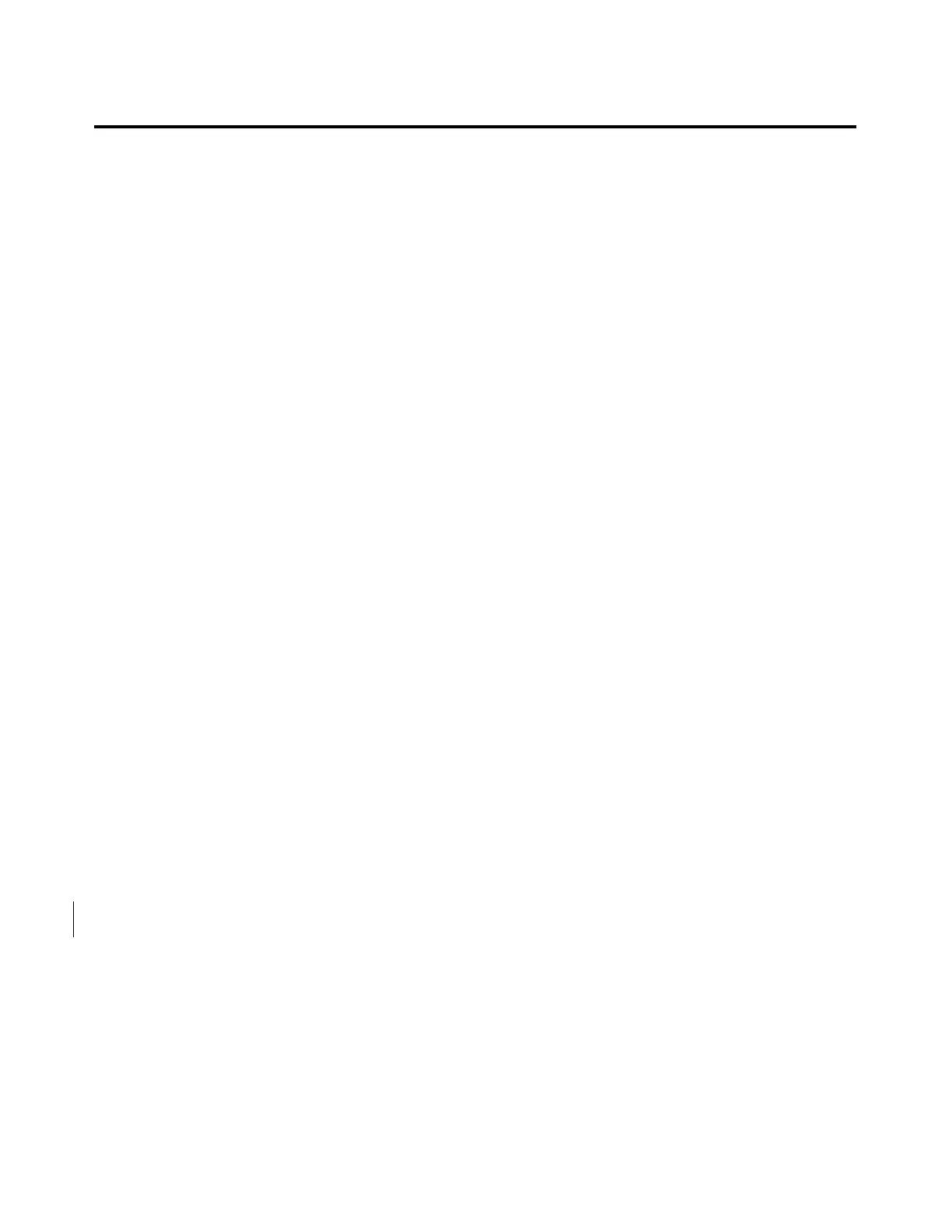